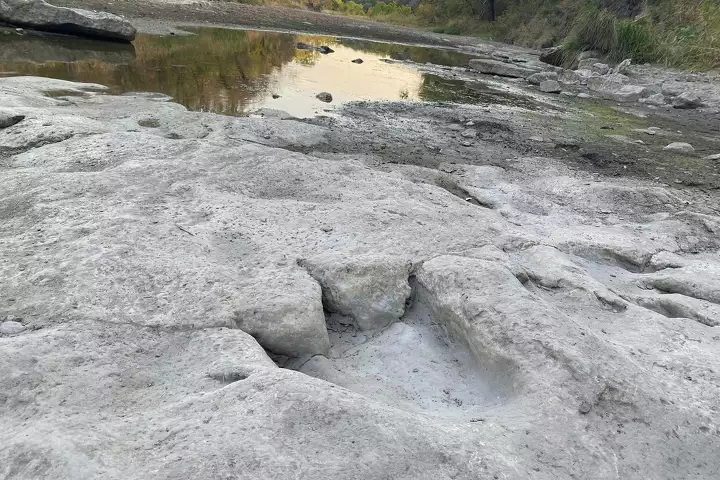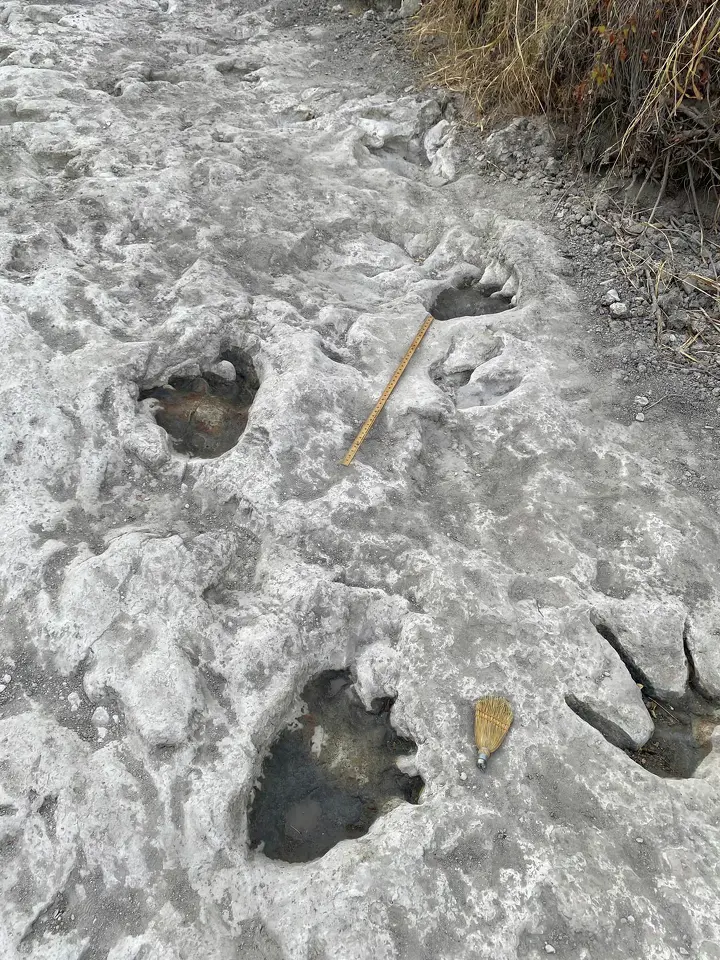Texas drought unearths 110-million-year-old dinosaur tracks
Severe drought conditions in Texas have unearthed massive dinosaur tracks at Dinosaur Valley State Park.
Drought in Texas uncovers big dinosaur tracks dating back 110 million years
The tracks are believed to belong to an Acrocanthosaurus and a Sauropodseiden.
By Ariana GarciaAug 29, 2023
Dry conditions in Texas have helped reveal new dinosaur tracks at Dinosaur Valley State Park.
Paul Baker
There may be an upside to the extreme heat in Texas after all. Severe drought conditions have uncovered about 70 new dinosaur tracks as of Tuesday in the Ball Room and Denio sites of Dinosaur Valley State Park in Glen Rose, Texas, located just south of Fort Worth. Normally hidden under the water and mud of the Paluxy River, the massive prehistoric prints are believed to date back to around 110 million years ago.
Paul Baker, retail manager at Friends of Dinosaur Valley State Park, said the discoveries are the most tracks park staff have ever seen at the Ball Room site. The newly unveiled three toed tracks likely belong to an Acrocanthosaurus, a 15-foot-tall dinosaur that weighed close to seven tons, he said. The larger elephant-looking tracks likely belong to a Sauropodseiden, a 60-foot-tall, 44-ton dinosaur sometimes referred to as a Paluxysaurus.

Newly unveiled three toed tracks likely belong to an Acrocanthosaurus, a 15-foot-tall dinosaur that weighed close to seven tons.
Paul Baker
"This is not normal for us, but due to two consecutive years of high temps and drought conditions it has given us the opportunity to uncover new tracks," said Baker, adding the rare sight won't last forever. "Once we receive a decent rain most of the tracks will be covered up again." As of Tuesday, more than 60 percent of Texas is under severe drought conditions, according to U.S. Drought Monitor.



New dinosaur tracks were unearthed at Dinosaur Valley State Park amid severe drought conditions.
Videos shared by the the state park show volunteers brushing away dried up dirt and dust to reveal the hidden prints. Baker said Glen Kuban, a researcher who has studied tracks at the park for 40 years, as well as members of the Dallas Paleontological Society will map and cast the tracks for future interpretive purposes.


